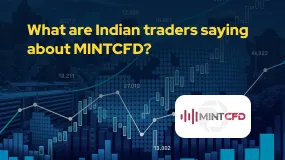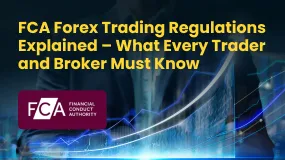简体中文
繁體中文
English
Pусский
日本語
ภาษาไทย
Tiếng Việt
Bahasa Indonesia
Español
हिन्दी
Filippiiniläinen
Français
Deutsch
Português
Türkçe
한국어
العربية
The Rise of Algorithmic Trading in Forex Markets: Opportunities and Risks
Abstract:Over the past decade, the integration of technology into financial markets has revolutionized forex trading. Algorithmic trading, driven by complex mathematical models and real-time data, has become a cornerstone of modern trading strategies. This article explores the transformative impact of algorithmic trading on forex markets, as well as the opportunities and risks it presents.

Introduction
Over the past decade, the integration of technology into financial markets has revolutionized forex trading. Algorithmic trading, driven by complex mathematical models and real-time data, has become a cornerstone of modern trading strategies. This article explores the transformative impact of algorithmic trading on forex markets, as well as the opportunities and risks it presents.
Opportunities Presented by Algorithmic Trading
Algorithmic trading leverages advanced computer programs to execute trades at speeds and frequencies beyond human capability. This automation allows traders to capitalize on minor price fluctuations, execute large volumes of trades in a fraction of a second, and minimize human error. Moreover, algorithms can process vast amounts of data—from historical trends to real-time news—providing a significant edge in a competitive market.
The rise of machine learning has further enhanced these systems, enabling them to adapt to market changes and refine strategies based on past performance. For institutional traders and even sophisticated retail investors, this technology promises higher returns through improved efficiency and predictive power.
Risks and Challenges
However, algorithmic trading is not without its challenges. High-frequency trading systems can amplify market volatility, sometimes triggering abrupt price swings or flash crashes. The reliance on automated systems also brings cybersecurity risks, as even a minor glitch or hacking attempt can lead to significant financial losses. Moreover, the complexity of these algorithms can make it difficult for regulators to monitor and manage systemic risk.
Transparency remains a critical concern. While algorithms operate based on predefined rules, their decision-making processes are often opaque, leaving room for unanticipated outcomes during periods of market stress.
Conclusion
The evolution of algorithmic trading has reshaped the forex market landscape, offering unprecedented speed and efficiency. Yet, as traders harness the power of automation, they must also navigate the inherent risks. Balancing innovation with robust risk management and regulatory oversight is essential for sustaining a healthy, dynamic trading environment.

Disclaimer:
The views in this article only represent the author's personal views, and do not constitute investment advice on this platform. This platform does not guarantee the accuracy, completeness and timeliness of the information in the article, and will not be liable for any loss caused by the use of or reliance on the information in the article.
Read more

What are Indian Traders saying about MINTCFD?
MINTCFD is an India-based broker. It's important to note that independent watchdogs have issued scam alerts against the broker. They label MintCFD as risky and possibly fraudulent. In this Article, we will tell you the red flags of MINTCFD to protect your money

Scam Alert: FCA Issued Warning! Check the List of Unauthorized Brokers Below!
Attention Traders! Never ignore a warning from a trusted authority like the UK’s FCA. If you do, you could risk losing your money. Check the list below of Scam forex brokers to protect yourself.

FCA Forex Trading Regulations Explained – What Every Trader and Broker Must Know
Want to begin your forex journey as a broker or trader in the UK? Start understanding the forex trading regulations applicable in the country. The regulations, imposed by the Financial Conduct Authority (FCA), are designed to enhance investor protection, operational transparency, and a robust UK forex trading market. Check out more about this.

Scam Surge in Sarawak: Losses Soar to RM77.7 Million in Just 7 Months
Online fraud in Sarawak is escalating at an alarming rate, with victims losing RM77.7 million in the first seven months of this year, marking a nearly 47 per cent jump from the RM52.9 million lost during the same period in 2024.
WikiFX Broker
Latest News
Fortrade: A Closer Look at Its Licenses
FRAUD ALERT! Spanish Regulator, CNMV Exposed Scam Brokers
Euro zone economy ekes out better-than-expected 0.1% growth in second quarter
Adidas to raise prices as US tariffs cost €200m
Top 4 Forex Scam Tactics Fake Brokers Use to Trap Investors
10 Best MUST- READ Books on Forex Trading
Inefex: Mastering the Art of Duping Forex Investors
Companies from Stanley Black & Decker to Conagra are saying tariffs will cost them hundreds of millions
Top Forex Chart Patterns Every Trader Must Know
How to use mt4?
Currency Calculator


